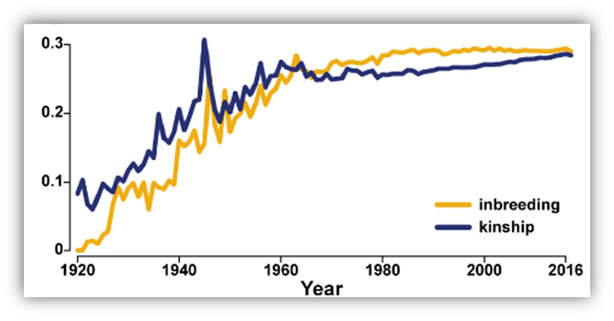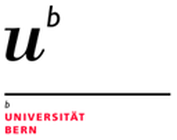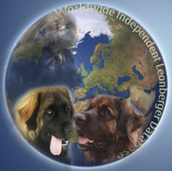Some Current Data . . .
- Worldwide the Leonberger population is currently estimated to be around 40,000.
- Leonbergers have a Worldwide Pedigree Database listing over 150.000 pedigrees, data that stretches back to 1880.
- In the database we can easily see the pedigree of the dog, siblings, offspring and health test results of tests performed. We can also see Mean-Kinship and Coefficient of Inbreeding calculations.
- This comprehensive pedigree database has made it possible for in-depth studies of the Population to be performed for the breed:
Anna Letko - University of Bern
Mean Kinship calculations Pieter Oliehoek - DOGS GLOBAL
- Alarmingly though we can also see that genetically it represents only 5.83 founders. The actual contribution comes from the genetic equivalent of less than 2 individuals.
- Across all generations, the average Leonberger today is more closely related than a brother sister breeding would be.
The average Leonberger today has a COI of 30%.
- The recent recalculation of Mean Kinship indicates that diversity continues to decrease exponentially. Both Coefficients of Inbreeding and Mean Kinship show a clear and steady increase, further narrowing the diversity of the breed.
See research article
The graph shows the average inbreeding and kinship increasing over time to about 30% in the current population.




